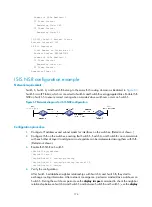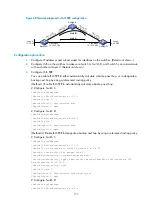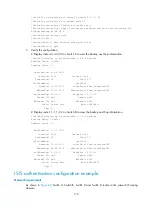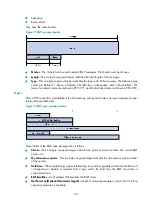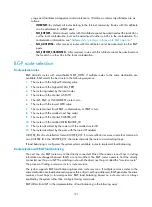
185
•
Keepalive
•
Route-refresh
They have the same header.
Figure 71
BGP message header
•
Marker
—The 16-byte field is used to delimit BGP messages. The Marker must be all ones.
•
Length
—The two-byte unsigned integer indicates the total length of the message.
•
Type
—This one-byte unsigned integer indicates the type code of the message. The following type
codes are defined: 1–Open, 2-Update, 3-Notification, 4–Keepalive, and 5–Route-refresh. The
former four listed codes are defined in RFC 1771, and the last listed code is defined in RFC 2918.
Open
After a TCP connection is established, the first message sent by each side is an open message for peer
relationship establishment.
Figure 72
BGP open message format
Major fields of the BGP open message are as follows:
•
Version
—This one-byte unsigned integer indicates the protocol version number. The current BGP
version is 4.
•
My autonomous system
—This two-byte unsigned integer indicates the autonomous system number
of the sender.
•
Hold time
—When establishing a peer relationship, two parties negotiate an identical hold time. If
no Keepalive or Update is received from a peer within the hold time, the BGP connection is
considered down.
•
BGP identifier
—An IP address that identifies the BGP router.
•
Opt Parm Len (Optional Parameters Length)
—Length of optional parameters, which is set to 0 if no
optional parameter is available.




